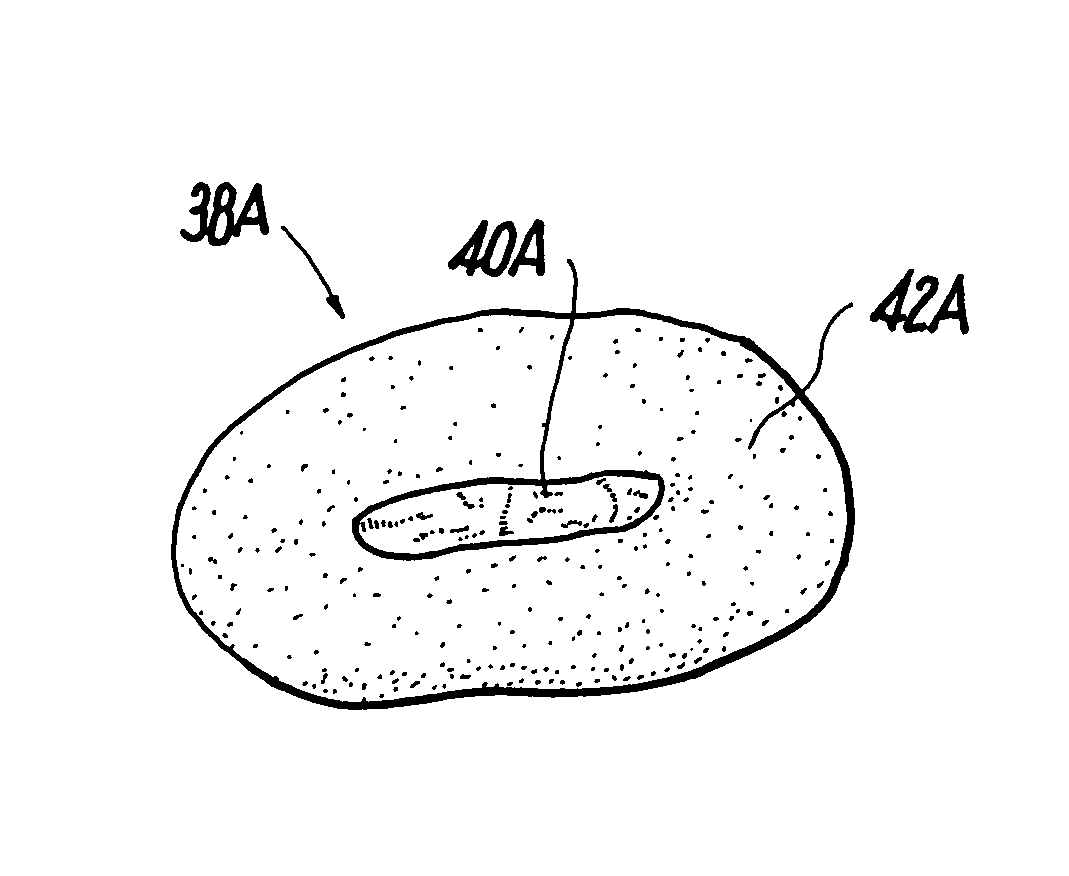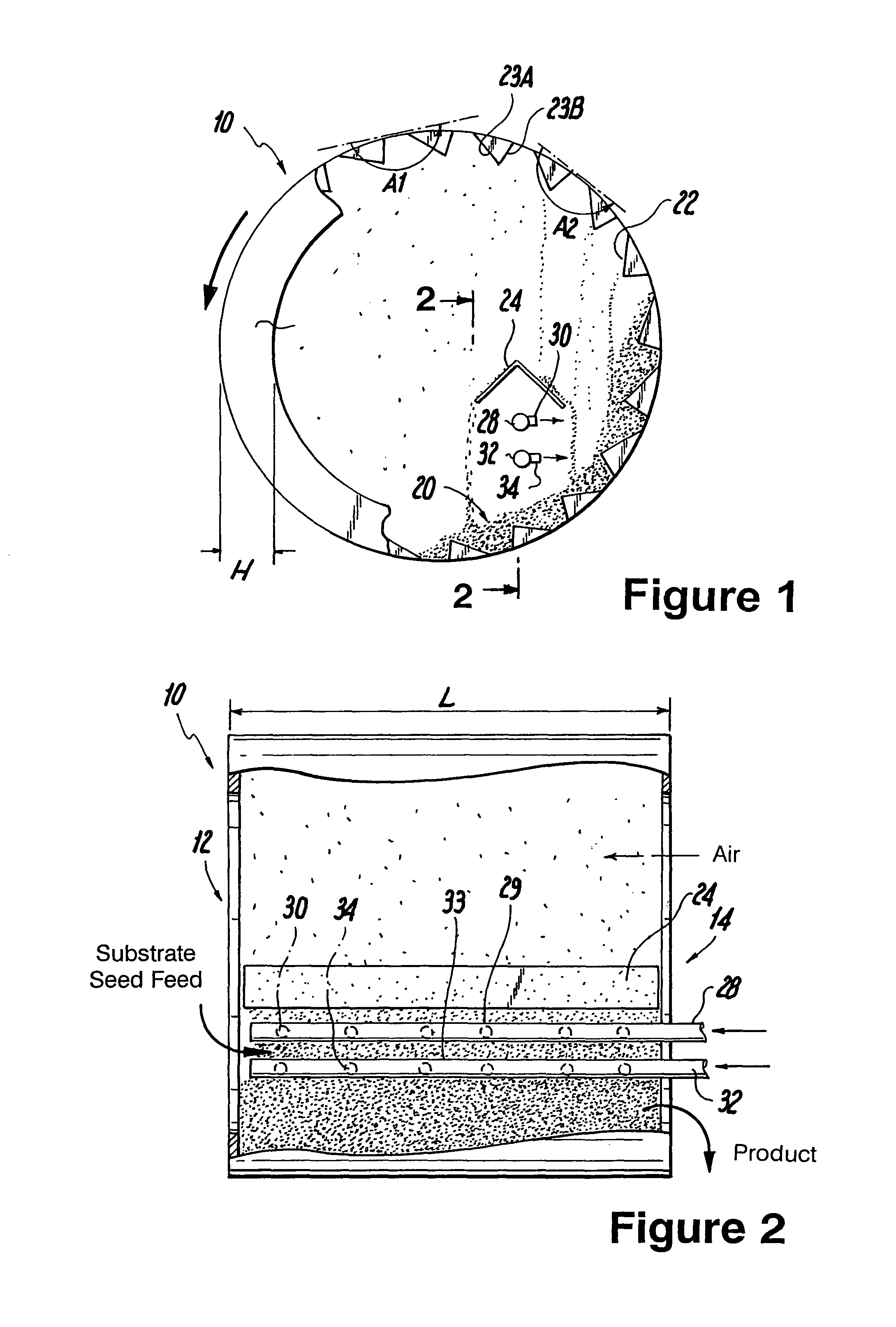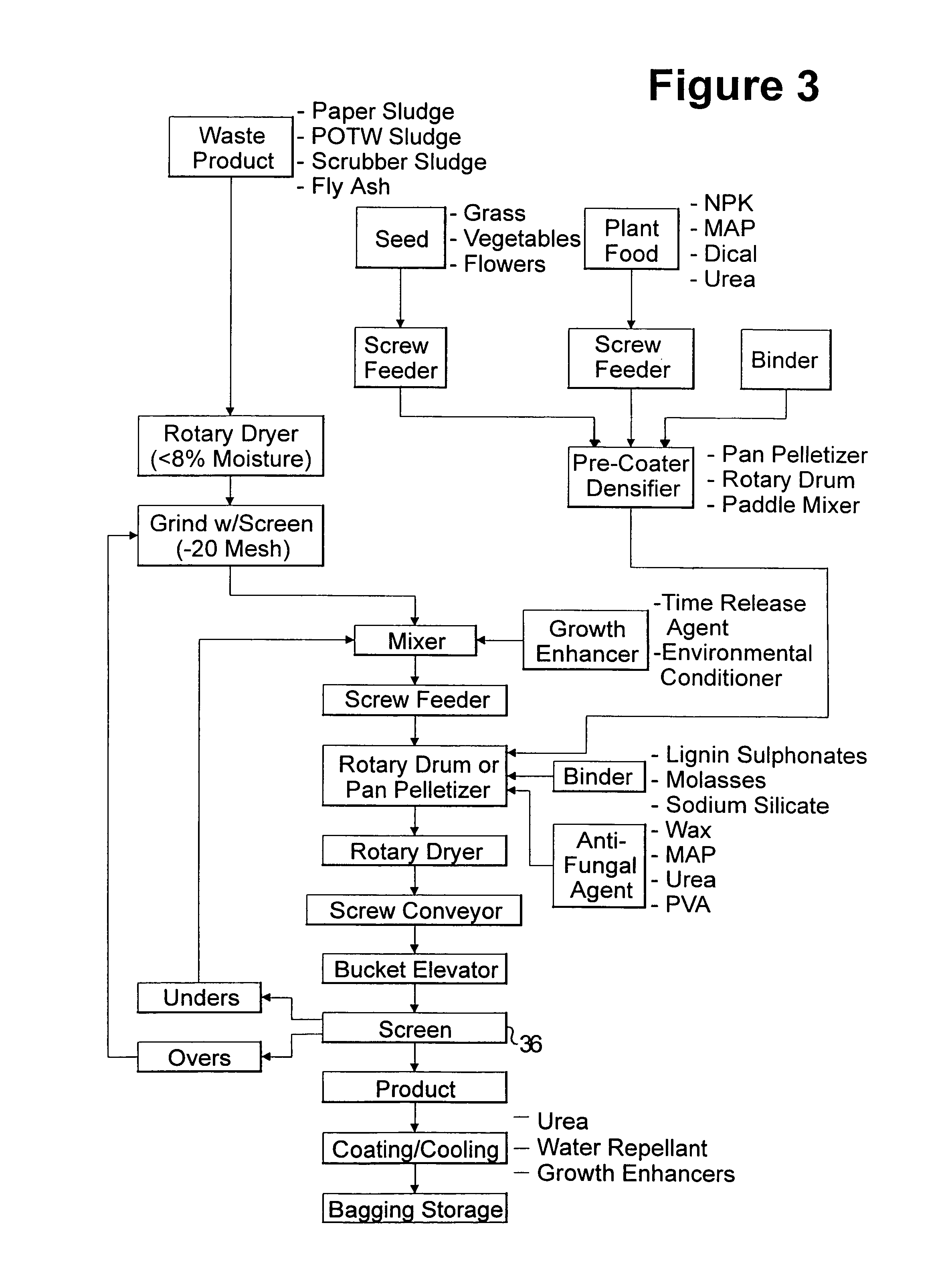Seeding treatments
a technology for treating seeds and root cells, applied in the field of seeding treatments, can solve the problems of limiting the range, affecting the growth rate of seeds, and seed being so small as to be difficult to handle, so as to enhance the growth conditions of seeds, enhance the growth rate of seeds, and enhance the properties of seeds
- Summary
- Abstract
- Description
- Claims
- Application Information
AI Technical Summary
Benefits of technology
Problems solved by technology
Method used
Image
Examples
example 1
[0125]A coating drum as illustrated in FIGS. 1, 2 and 4 is used to place a coating of paper mill sludge on grass seed. Raw material grass seed about 4-6 millimeters long and about 0.5-1.0 millimeter thick, is continuously fed to pre-treater 11, where the seed is blended with powdered lime, powdered flyash, and a lignosulfonate binder, to form partially-developed seed capsules comprising seeds coated with relatively thinner coatings of the recited mixture of coating materials. The partially-developed seed capsules are continuously fed to inlet end 12 of drum 10, to form a bed 20 of the partially-developed seed capsules. The drum rotates continuously. The rolling of the drum, and the associated mixing affect of the flights, provide a constantly changing top surface of the bed. A paper mill sludge slurry is supplied in pipe 28 at pressure sufficient to atomize the liquid sludge slurry. A liquid sludge slurry is thus sprayed from nozzles 30 onto the top surface of the bed of partially-d...
example 2
[0127]FIG. 5 illustrates the equipment used in this EXAMPLE 2. As seen therein, grass seed, lime, flyash, and calcium lignosulfonate binder are fed to ribbon blender 111 by respective screw feeders 112A, 112B, 112C, 112D respectively. Ribbon blender 111 encapsulates the seed with a thin layer of the mixture of lime, flyash, and lignosulfonate to thereby make partially-formed seed capsules. The partially-formed seed capsules are discharged from the ribbon blender and conveyed by conveyor 114 and belt feeder 116 to a tilted-pan pelletizer 118, which rotates about a fixed axis.
[0128]Paper mill sludge is received into a weigh hopper 120 at about 60% by weight water, and is fed by screw feeder 122 and belt 124 to pin mixer 126. The pin mixer breaks down the fiber and fiber clusters of the sludge into loose separate fibers, and discharges the resultant material onto conveyor 128 which transports the material to screw feeder 130, and thence into the tilted pan pelletizer.
[0129]In the title...
PUM
 Login to View More
Login to View More Abstract
Description
Claims
Application Information
 Login to View More
Login to View More - R&D
- Intellectual Property
- Life Sciences
- Materials
- Tech Scout
- Unparalleled Data Quality
- Higher Quality Content
- 60% Fewer Hallucinations
Browse by: Latest US Patents, China's latest patents, Technical Efficacy Thesaurus, Application Domain, Technology Topic, Popular Technical Reports.
© 2025 PatSnap. All rights reserved.Legal|Privacy policy|Modern Slavery Act Transparency Statement|Sitemap|About US| Contact US: help@patsnap.com



